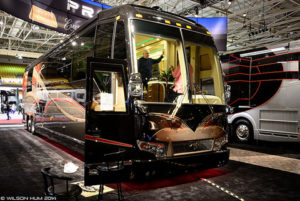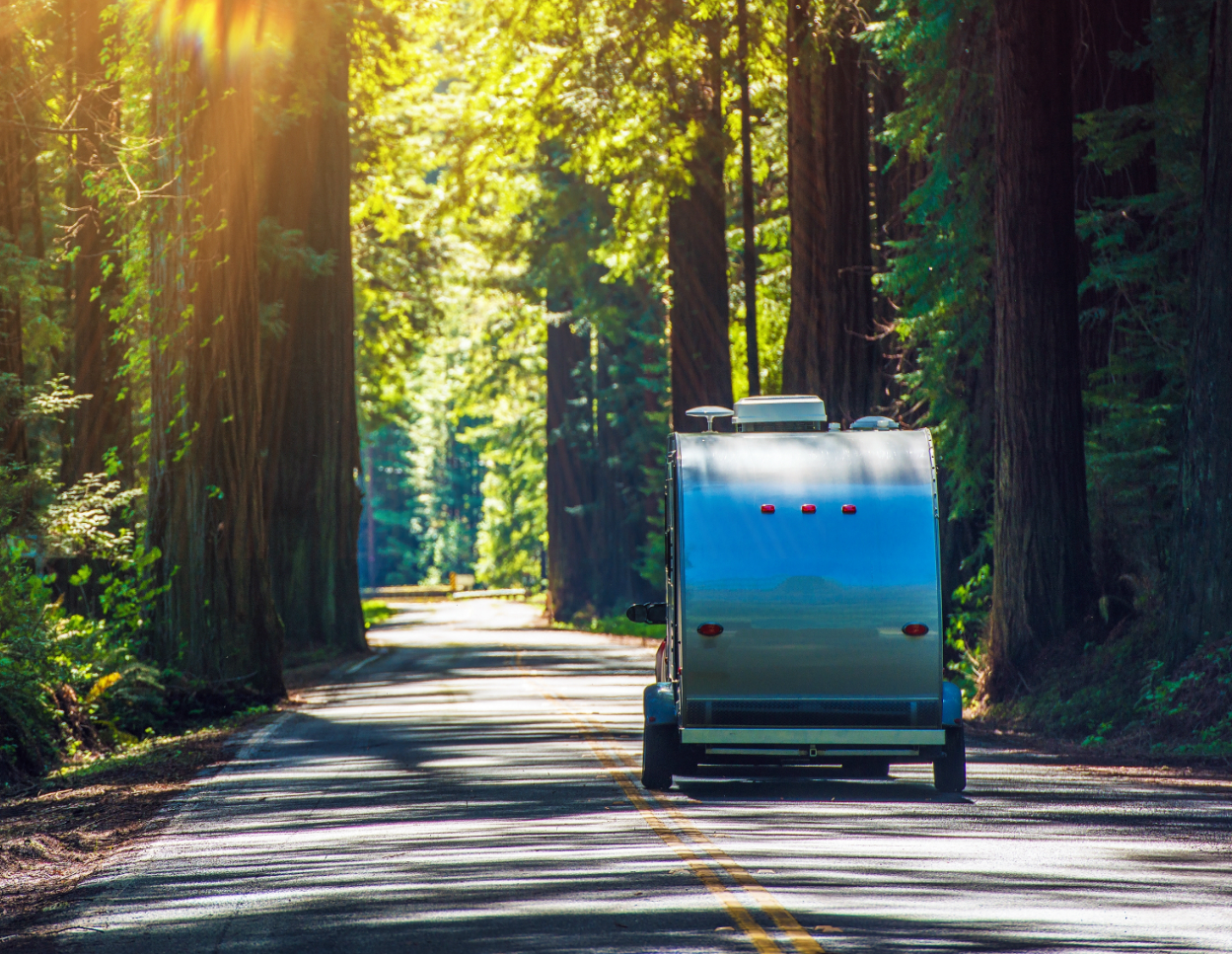
Walking the aisles of the Florida RV SuperShow this weekend, it was easy to be awestruck by the million-dollar motorcoaches. They shone beneath bright stage lights, all polished and new and ready for some buyer to break out the trust-fund checkbook. Yet from the most grand coaches to van-like “class B” Sprinters to respectable towables, there were accommodations for every taste, budget, and festival experience.
Matching the right unit to your lifestyle needs and festival expectations requires a bit of vision.
On the higher-end, the venue was stacked with ultra-luxury “Class A” Prevost, Newmar, Tiffin, and Thor coaches, to bodacious Renegade “Super C” motorhomes, to high-end Grand Design and classic Airstream travel trailers, whose apparent modesty aside, will still set a buyer back $70,000 or more.

On the smaller scale, uber-cool digs included such trendy micro and “teardrop” trailers as a host of Rpods – the popular line from Forest River, to the NuCamp, and the myPods, Max, Rough Rider, and Silver Shadow from Little Guy. We walked the festival grounds and saw Class As (think traditional RVs that are driven, not towed) and pop-up trailers pulled by any modest sedan. That myPod can even be pulled by a motorcycle.
One Point of Information: Here at RoadtripMojo.com, we write about all categories of camping vehicles – travel trailers, fifth wheels, Sprinters, and motorhomes (or RVs). In this article, we’re being specific by type. For the sake of simplicity, however, we typically refer to them all generally as “RVs” or “campers,” though the Prevost folk might take offense to that moniker.
Now, a little more about that “vision” thing.
Let’s assume you know your budget (of course, financing is available) and are willing to drop on a new unit anywhere from the mid $20,000s to a million or more for a luxury coach – plus upkeep, insurance, travel expenses, and storage costs when not in use. Next, is that “vision thing.”
Invision these five tips for matching your camper to your lifestyle…
- How much do you want to pull? If you’re not willing to upgrade from your small, four-cylinder coupe, you’re limited in the weight limit it can tow. The LittleGuy myPod claims it can be towed by a motorcycle. A fifth wheel requires a powerful pickup truck equipped to safely pull 10,000 pounds or more. If you want to tow, somewhere in between is the perfect towable for you. Remember, the bigger the unit, the more powerful the tow vehicle required to pull safely. Don’t stretch your vehicle’s limits or your own skills.
-

Rear kitchen on NuCamp teardrop How much or little do you need to camp comfortably? Can you “rough it,” or do you need creature comforts? Most teardrops are little more than a bed, maybe a TV and stereo, and an outdoor kitchen tucked into the rear. Need a commode or shower? You’ll either need a park or campground with facilities, or haul a shower bag and use the facilities mother nature provides. Some smaller trailers feature a “wet bath,” where the commode gets wet with each shower. Larger trailers feature spacious bathrooms with separate showers.
- Do you travel with a crew? This is critical. Are you solo? Do you

Basecamp with detachable vestibule have a spouse or partner? What about a critter? It’s been said you really, really need to like your travel buddy – whether spouse, partner, friend, or pet – do live in a micro unit or even a B Class Sprinter. Do you invite friends to join you on your festival experience? Some units, like the Airstream Basecamp, is an ideal central “basecamp” – with a wet shower, small galley, and cozy accommodations for two – when fellow campers might be tenting it.
- Will you want or need hookups? Some state or national parks and festivals sites, like the Spirit of Suwannee Music Park in Live Oak, Florida, offer camper sites with complete hook-ups 30A or 50A power, water, and sewer (the triumvirate of “full hook-ups” campers often seek). The opposite is “boondocking,” or camping totally self contained, with the possible inclusion of a generator for power. In the middle, what festivals like Lockn’ in Virginia offer are 30A or 50A power, with scheduled water refills and sewage “pump-outs.” Some offer even less. What’s the minimum you need to feel “at home” with your camping experience?
Options – and price points – abound. Used is always a viable option (RV Trader was an exhibitor at the SuperShow, and many Facebook and social media groups encourage members to list units for sale). To try before you buy, renting is an option as well.
One caveat applies no matter what unit you may consider: Know your personal “creature comfort” threshold before you choose.
After all, many in the festival set might be “hippies.” But we’re not heathens.

Fantastic post and very cool insight. So glad we found your page. Keep up the great work we are huge fans!
Great read. Great info.
Appreciate the love, Brian. Stay tuned for lots more – and feel free to submit ideas. We’re community driven and focused!